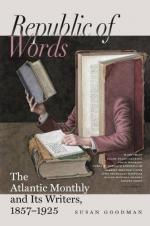In the first volume, pages 446-455, the life of Garcilasso de la Vega is almost entirely rewritten from materials found in a recent biography by Don Eustaquio Navarrete, which Mr. Ticknor pronounces “an important contribution to Spanish literary history.” The writer is the son of the learned Don Martin Navarrete.
In the second volume, pages 75-81, many new and interesting facts are stated in regard to the life of Luis de Leon, derived from a recently published report of the entire official record of his trial before the Inquisition, of which Mr. Ticknor says that it is “by far the most important authentic statement known to me respecting the treatment of men of letters who were accused before that formidable tribunal, and probably the most curious and important one in existence, whether in manuscript or in print. Its multitudinous documents fill more than nine hundred pages, everywhere teeming with instruction and warning on the subject of ecclesiastical usurpations, and the noiseless, cold, subtle means by which they crush the intellectual freedom and manly culture of a people.”
In the same volume, pages 118-119, some new and interesting facts are stated which prove beyond a doubt, that Lope de Vega was actuated by ungenerous feelings towards his great contemporary, Cervantes. The evidence is found in some autograph letters of Lope, extracts from which were made by Duran, and are now published by Von Schack, an excellent Spanish scholar.
In the same volume, page 191, is a copy of the will of Lope de Vega, recently discovered, and obtained from the late Lord Holland.
In the same volume, pages 354-357, is a learned bibliographical note upon the publication and various editions of the plays of Calderon.
In the third volume, Appendix B., pages 408-414, is a learned bibliographical note on the Romanceros.
In the same volume, Appendix C., pages 419-422, is an elaborate note on the Centon Epistolario, in reply to an article by the Marques de Pidal.
In the same volume, Appendix D., pages 432-434, is a new postscript on the clever literary forgery, El Buscapie.
At the close of the third volume there are seven pages giving a brief and condensed account of the several works connected with Spanish literature which have been published within two or three years past, and since the stereotype plates for the present work were cast.
The present edition is in a duodecimo, instead of an octavo form, and is sold at a less price than the previous ones.
In the closing sentences of the preface to this edition, Mr. Ticknor says: “Its preparation has been a pleasant task, scattered lightly over the years that have elapsed since the first edition of this work was published, and that have been passed, like the rest of my life, almost entirely among my own books. That I shall ever recur to this task again, for the purpose of further changes or additions, is not at




